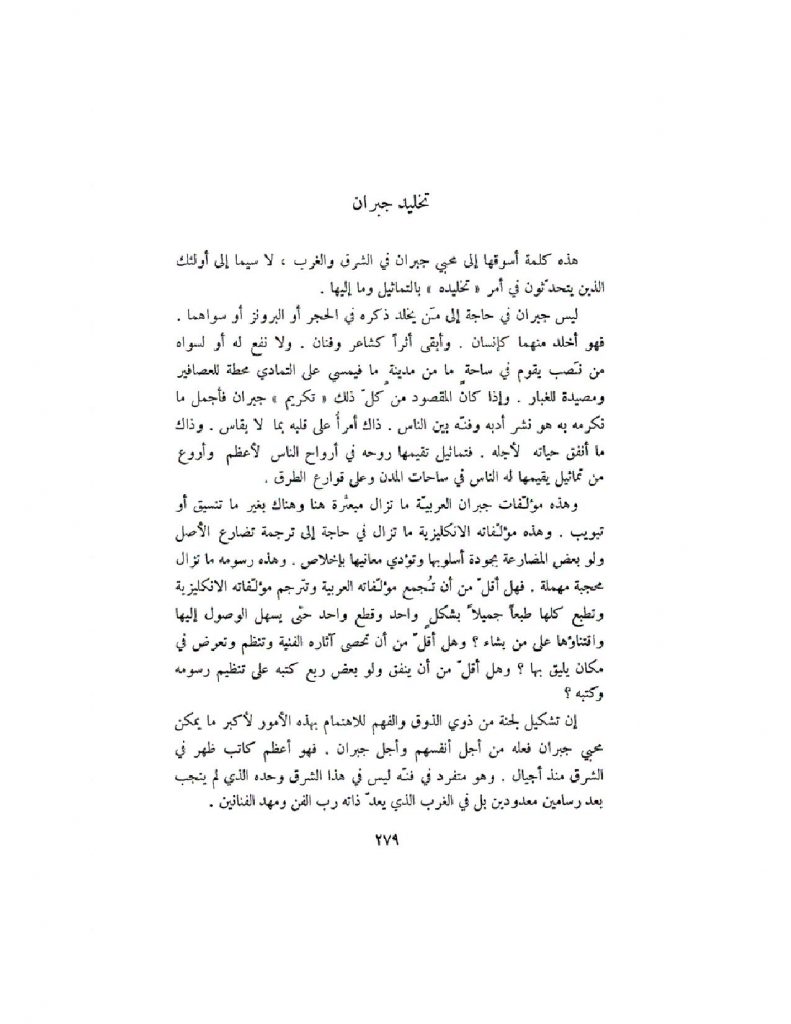
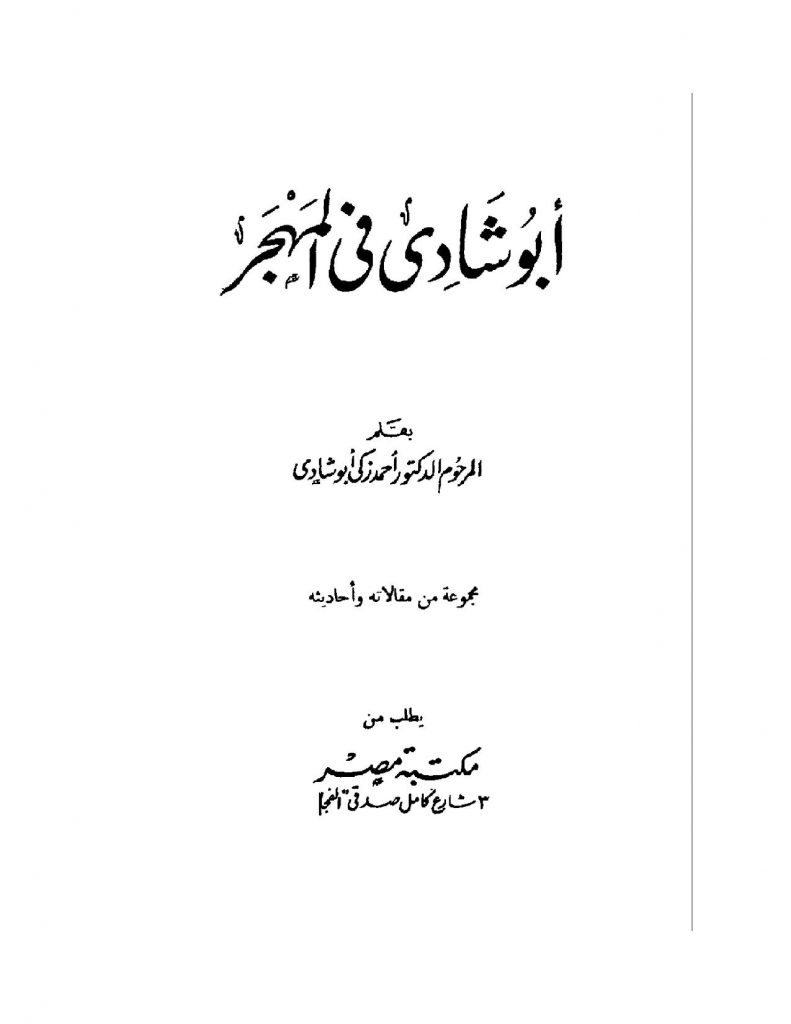

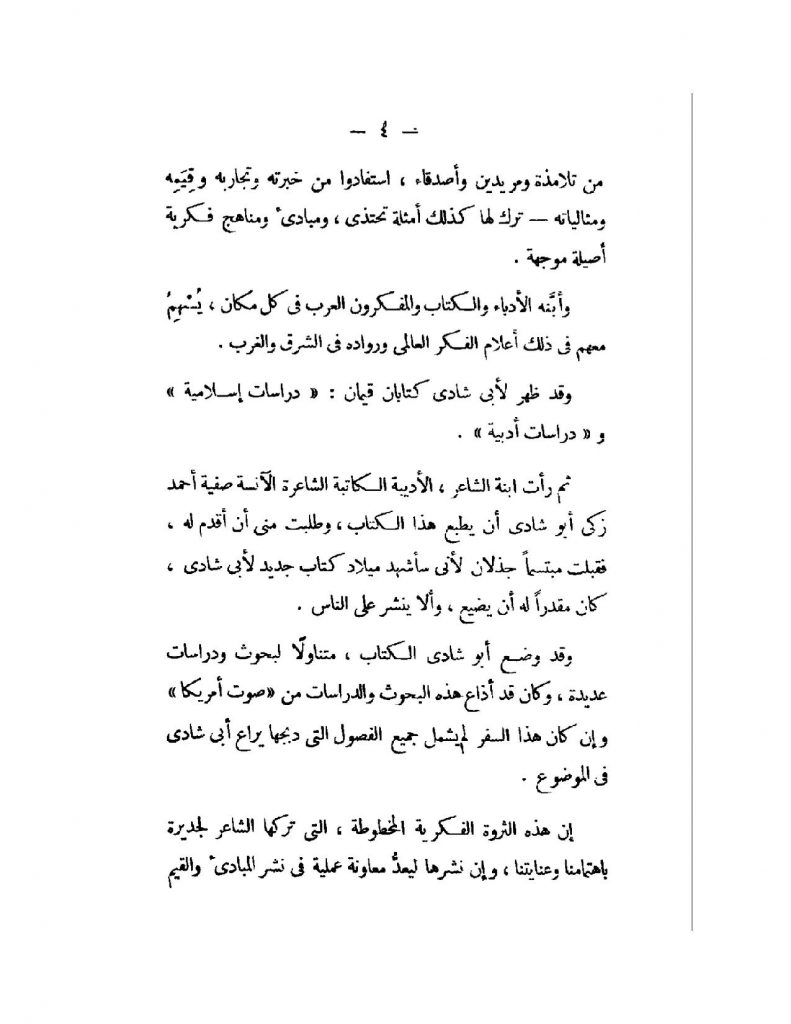

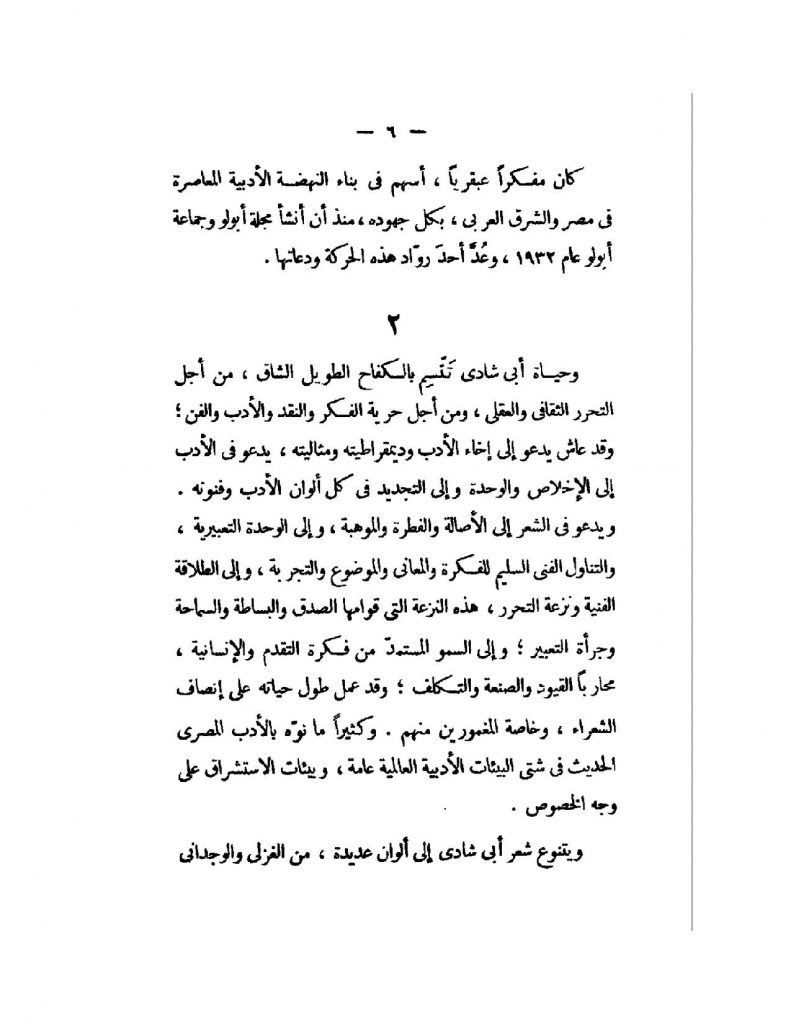
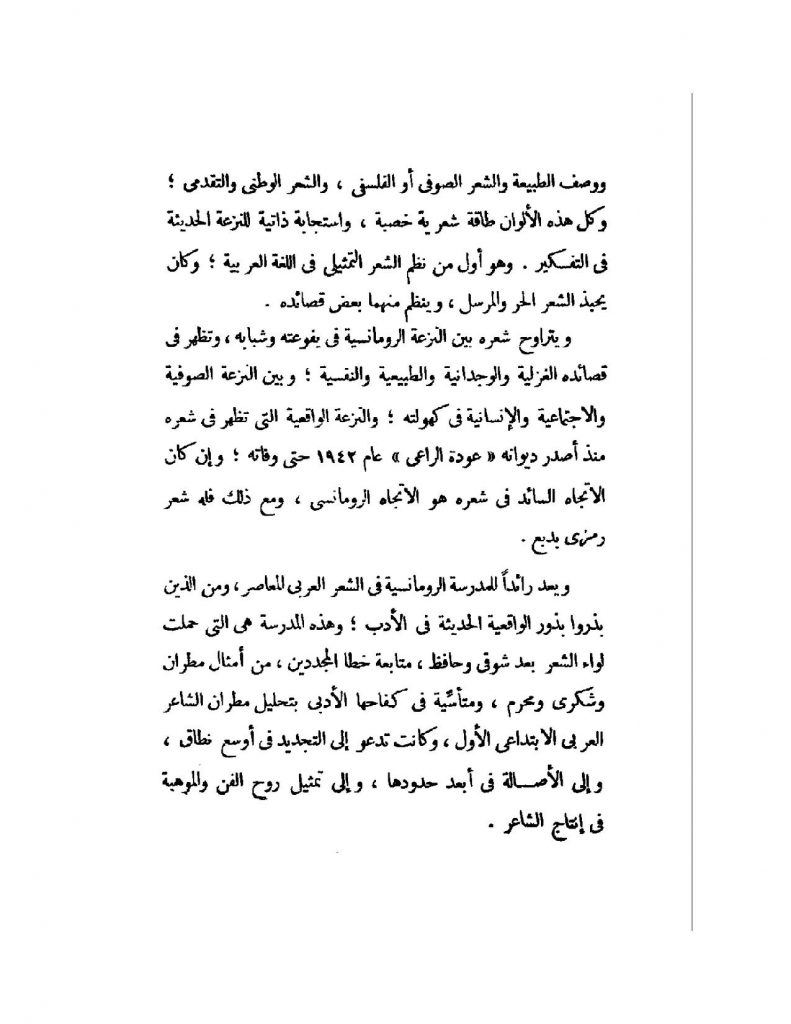


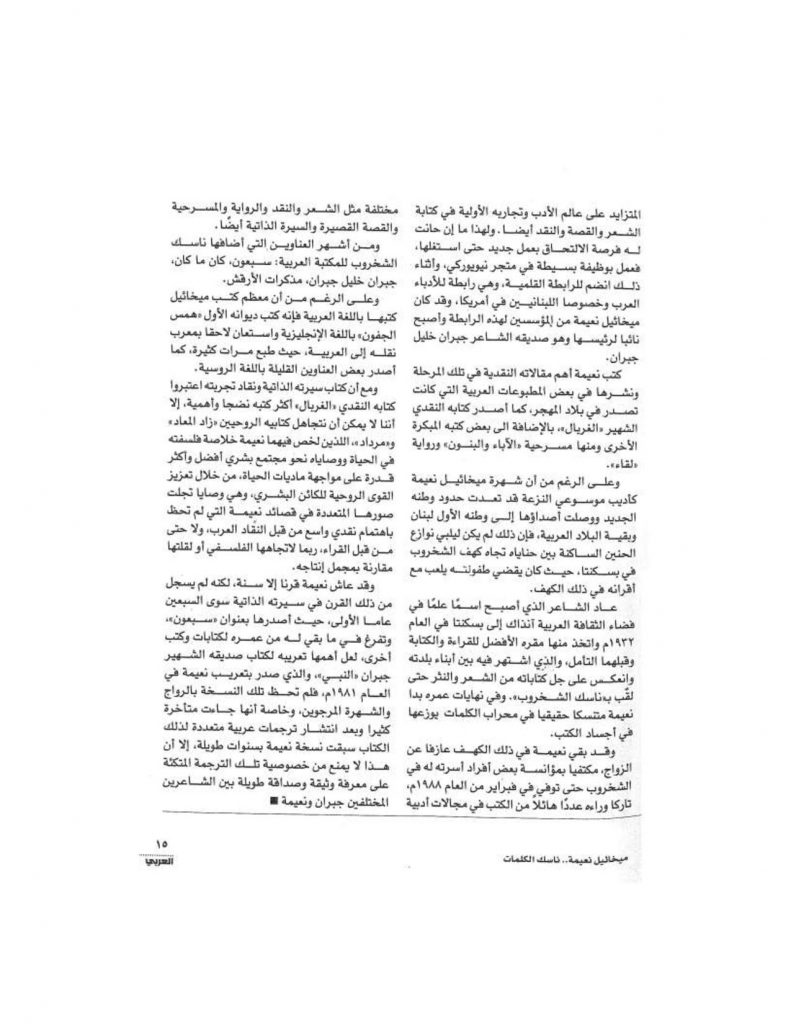

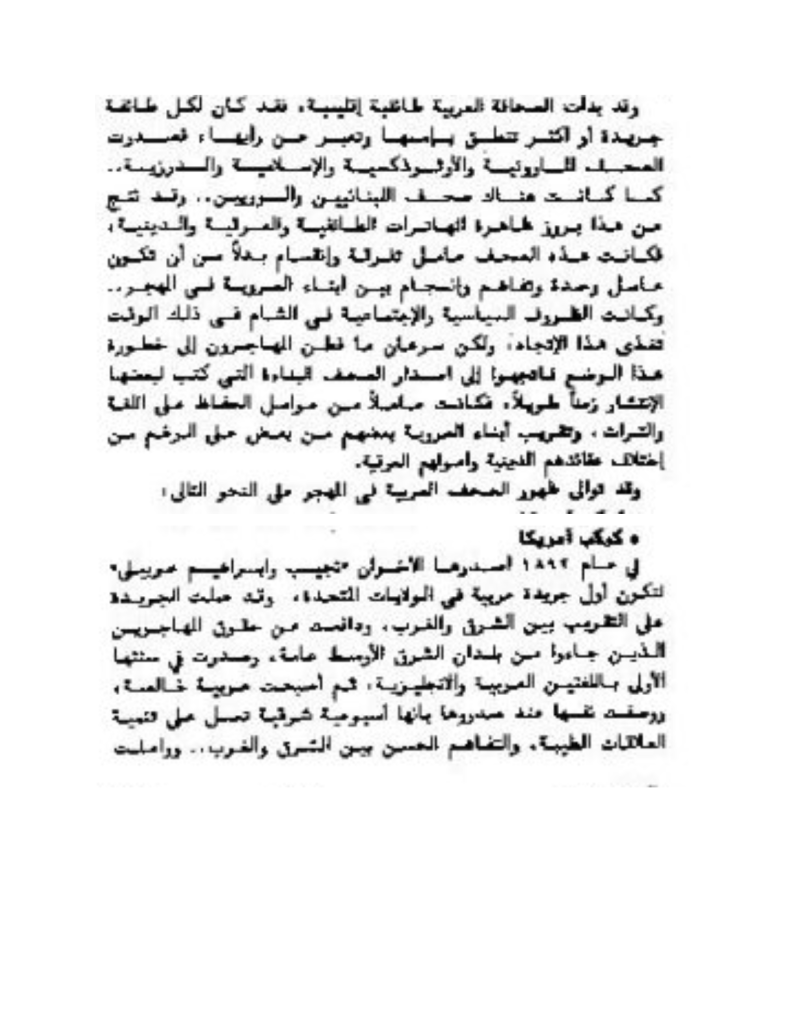
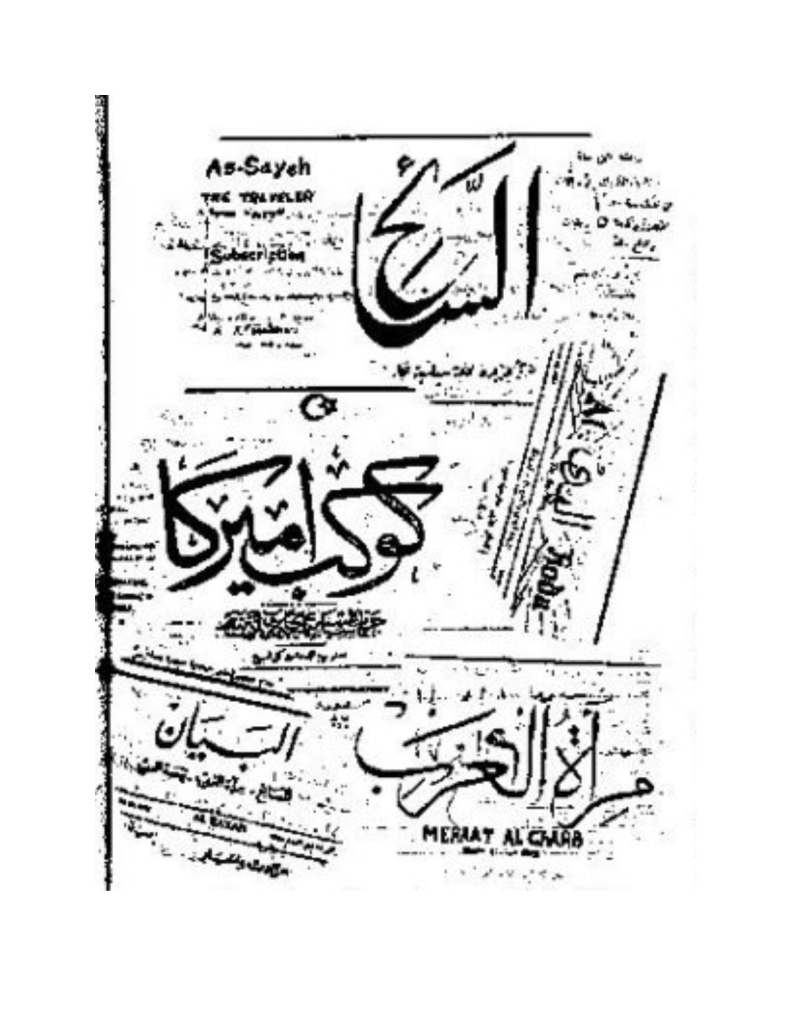



المفعول لأجله ‘Accusative of Purpose’
How do we express cause, reason, motive, intention, purpose, in Arabic, or in other words, what constructions do we use to answer questions with لمَ ، لماذا ?
There are various ways of expressing reason and purpose in Arabic.
1. One is by means of prepositions, most commonly لِ and من :
كثيرون ماتوا من الجوع والألم Many died of hunger and pain.
فعلت ذلك من أجل العائلة I did this because/for the sake of the family.
اريد ان أراك لأمر هامّ I want to see for something important.
2. Another way is by means of the particles that govern verbs in the subjunctive such as كي , لكي , and حتّى with the meaning of ‘for the purpose of, in order to’ ( see lesson 11 Grammar Note 2), and السببية الفاء ‘and so, with the intended goal, as a consequence’ (see Note 4 in this lesson), and by the particle ل ِ ‘in order’. This last in addition to being followed by a verb in the subjunctive, like the others, may, unlike them, be followed by a noun clause with انْ و أنّ, and as such may also be followed by a verbal noun , as seen in the examples in the left column below where no verbal nouns follow the others).
حضر حتّي/كي / ليطلب العلمَ = حضر لطلب العلمِ He came in order to seek knowledge.
حضر حتّي/لكي/ ليستعدّ للامتحان = للاستعداد للامتحان He came to get ready for the exam.
حضر لانّه خاف من الوضع = لخوفه من الوضع He escaped out of fear of the situation.
يتنقّل البدو ليسعَوا وراء الماء = للسعْيِ وراء الماء The Bedouins move about to seek water.
حضرحتّي/لكي/ ليدرس = حضر للدراسة He came in order to study.
حضر لأني طلبتُ المساعدة = لطلبي المساعدة He came because I asked for help.
3. A third very common way to express purpose or reason is to use an indefinite مصدر in the accusative (such as in the examples below on the right), a construction you are familiar with and may know as مفعول لأجله , called in English grammars of Arabic ‘accusative of purpose’.
المفعول لأجله
حضر ليطلب العلمَ = حضر لطلب العلمِ حضر طلباً للعلم
حضر ليستعدّ للامتحان = للاستعداد للامتحان حضر استعدادا للامتحان
حضر لانّه خاف من الوضع = لخوفه من الوضع حضر خوفاً من الوضع
He escaped out of fear of the situation.
\يتنقّل البدو ليسعَوا وراء الماء/للسعْيِ وراء الماء حضروا سعياً وراء الماء
حضر ليدرس = حضر للدراسة —
He came in order to study.
حضر لأني طلبتُ المساعدة = لطلبي المساعدة —-
He came because I asked for help.
Observations concerning المفعول لأجله
- You will observe that there is no مفعول لأجله in two examples above. Why? In the first sentence before last the verb or مصدر, درس – دراسة does not belong to the semantic class of verbs that has to do with perception, feeling, desire, mental activity etc., referred to in Arabic as افعال القلوب . In other words only with such verbs can we form and use مفعول لأجله .
- But why can’t we use مفعول لأجله in the last sentence above where we do have one such verb ? Well, in examining the sentences where we can use مفعول لأجله , we note that the subject of the verb in the main clause must be the same as that of the مصدر , whether صريح او مؤوّل ; in the last sentence above they are not. It would have been possible had it been حضرتُ لأني طلبتُ المساعدة where we could haveللمساعدة حضرتُ طلباُ
- When المصدر has an object, that object must be preceded by the preposition لِ , as in طلباً للعلم in the second sentence above
With very few examples given by some grammarians, المفعول لأجله is most commonly indefinite accusative in MSA and cannot therefore form an إضافة with its object.
- When the object of the verb from which the المصدر is derived must be preceded by a specific preposition, that preposition is retained, as in
الوضع خوفاً من in the fifth sentence above, and in بحثا ً عن الماء ‘in search of water’.
(iii) المفعول لأجله can appear in first position in the sentence, hence before the main clause:
استجابة ً لطلب الشعب صرّح أنّ … In acquiescence to the people’s demands, the minister declared…
- Only one occurrence of المفعول لأجله can be allowed in succession, unless of course we use و. Thus, the following is not a well-formed sentence:
*حضر طلباً للعلم استعدادا للامتحان (no translation is provided or needed)
but the following is of course acceptable :
حضر طلباً للعلم واستعدادا للامتحان (here again no translation is provided or needed)
- المفعول لأجله can be used, especially in journalistic and media discourse, in first position in the sentence, hence before the main clause:
استجابةً لطلب الشعب صرّح الوزير أنّ … In acquiescence to the peoples’ demand the minister declared …
It will be very useful for review and other purposes to compare المفعول لأجله with other constructions such as حال، نعت، خبر، تمييز with respect to their constructions, their occurrence as series, their position in the sentence and so on 4. A number of expressions, mostly prepositional phrases, consisting of a preposition followed by nounsthat mean reason, cause, purpose, intention etc. in an اضافة with a , مصدر صريح او مؤوّل have come to be widely used in Modern Standard Arabic to express purposive ideas. The following are of very common occurrence:
بغرض ‘with the goal of’, بسبب ‘for the reason that’, بهدف ‘with the goal to’,
على نـِيـّةِ/بـِنيـّة أنْ ‘with the intention to’, بقـَصْد ‘with the intent to’.
Some expressions, which are verbal nouns have even come to be used without the preposition and in the accusative. These include: قصدَ ‘with the intent to’, بُغـْيـَة َ ‘with the aim of’, خِـَشْية َ ‘out of fear that’, ابْتِغاءَ ‘for the purpose of, with aspiration for’ مَخافة’for fear of, lest’. These purposive expressions are very often followed by verbal nouns and/or noun clauses, in an إضافة , a construction which is very rare as given above and almost confined to them.
فعل ذلك بُغـْيـَة َ وضع ِ أساس ٍ للمفاوضات He did that with the desire of establishing a basis for negotiations.
حضر قصدَ/بقَصْدِ إرضاء والديه. He came with the intention of pleasing his parents.
الحال
a. الجملة الرئيسيّة The main clause.
In the examples we have seen so far, the main clause modified by a حال had (i) a noun or noun phrase to which حال referred, called صاحب الحال ‘antecedent’ and (ii) a verb that it was concurrent with, called its عامل ‘regent’. This is most often, but not always, the case.
1. الجملة الرئيسيّة بدون صاحب main clause with no antecedent
We earlier discussed the case where there was no صاحب in the main clause , as in the following and similar examples:
دخل الجنود المدينة وقد حلّ الظلام. The soldiers entered the city, darkness having fallen.
In lesson 11 and in this lesson, there are other examples of main clause with no antecedent:
ومرّت الأيام وسلوى تكتب الى أهلها … Days passed,with Salwa writing to her parents..
ومرّت خمس سنوات والكتاب لم يطبع. Five years have passed without the book being printed.
As can be noticed, the main clause refers to the passage of time, in which a صاحب is not present but is implied, for example سلوى in the first example and the author of the book,
“هي” in the Basic Text. Such examples, with main clauses that are time clauses, are very frequently encountered.
2. الجملة الرئيسيّة بدون صاحب وبدون عامل main clause with no antecedent or regent
Here is example:
منذ سنوات وانا ابحث عن عمل. For (“since”) five years I have been looking for work.
In this sentence neither صاحب nor عامل are mentioned; in fact instead of a main clause, we have a time expression which serves as the time frame for الحال.
And finally,
3. الجملة الرئيسيّة وبدون عامل main clause with no regent
This is the case where the main clause is a verbless existential clause:
اخي في أمريكا يدرس الهندسة. My brother is in America, studying engineering.
هناك صدبق حميم في المستشفى يبحت عن علاج. There is a good friend in the hospital looking for a cure
عندنا ضيوف أعِزّاء ينتظرونك. We have dear guests at home waiting for you.
b. جملة حالية فعلها فعل ماضٍ حال clause with past tense verb
Consider the second sentence above:
ومرّت خمس سنوات والكتاب لم يطبع. Five years have passed without the book being printed.
1) We saw that in the case of a verbal حال clause with the verb in الماضي , the verb, preceded by قد , should come in first position. We have here another example of the trend to use subject in first position. As pointed out earlier this is becoming more common.
2) حال is in the negative, andقد is obligatorily deleted, unless it is preceded by كان .
Compare the following two sentences:
مات رئيس النادي ولم أتشرّف بمقابلته.
The president of the club died without my having the honor to meet him.
اجتمعنا أمس ولم أكُن قد قابلته من قبل.
We got together yesterday, with me not having met him before.
.
عِلماً بِأنَّ... ‘given that, it being understood that, with the understanding that…’
Uses of الواو ‘waw’
This particle is very commonly used and we are quite familiar with the most frequent of its uses as a coordinating conjunction par excellence العطف واو and as a subordinator in the case واو الحال . It is important to remember that العطف واو coordinates syntactically similar or functionally equivalent constructions: two noun phrases, two verbs, two nominal sentences, two verbal sentences, two imperatives, a noun clause and a verbal noun equivalent, etc. It thus contrasts with the other very familiar particle واو الحال , for which see (Lesson 1, GRAMMAR NOTE 1, Lesson 11, GRAMMAR NOTE 1, and this lesson GRAMMAR NOTE 2 earlier).
Two further uses of الواو
1. واو المعيّة ‘the waw of accompaniment’, an example of which occurs in this lesson, meaning a thing which accompanies some action or with which an action is done, and is also called ‘the waw of association, concomitance’. It is followed by a noun in the accusative with the meaning of مع ‘with’, hence the name المفعول معه ‘the object in connection with which something is done’:
سِرت والبحرَ. I walked alongside the sea.
عدتُ وإياه الى المدينة . I returned to town with him.
لا تتّفق والمبادئ َ العاليةَ. It is not in agreement with high moral principles.
This construction occurs with a limited number of verbs, most of which imply accompaniment such as having alongside, agreeing with, in conformity with, reciprocity, and such, and in expressions such as
وما شأنُك و/ما لك ‘what have you to do with’ and in sayings such as:
كل شيء وثمنَه. Everything has its price.
.
2. واو القسم ‘the waw of oath’. It is followed by a noun, usually a noun of reverence , the object sworn by, in the genitive:
هو واللهِ ليس أهلاً بهذا الترحيب. He, I swear, is not worthy of this welcome.
الفاء كحرف معنى The particle ف
This particle has a number of meanings in Arabic, most of which you are familiar with, except perhaps for the following:
a. Causal ف or ، فاء السبب ، فاء الجواب فاء السببيّة
This is used to express the result, effect, or intended goal of the preceding clause, and thus has the meaning of حتّى
لا اريد ان اذكر بعضهم فأُغْضِبَ البعض الآخر. I do not want to mention some of them only to anger the others.
It follows clauses that express a hope, wish or desire, are imperative in nature, or ask a question. It is followed by a verb in the subjunctive مضارع منصوب . Here are other examples:
اضحكْ فتضحكَ لك الدنيا. ا
سِر مع الله فتهونَ المصاعب.
يا ليت عندي مال فاتبرّعَ به للمصابين.
ألا تأتينا فتُخبرَنا بما حصل.
Notice the nuance in meaning in the following:
اضحكْ فتضحكَ لك الدنيا Laugh so that the world can laugh with you.
اضحكْ فتضحكُ لك الدنيا Laugh and the world will laugh with you.
and compare them with:
اضحكْ فتضحكْ لك الدنيا If you laugh, the world will laugh with you.
and also between:
ألا تأتينا فتُخبرَنا بما حصل Won’t you come so as to tell us what happened.
ألا تأتينا فتُخبرُنا بما حصل ’Won’t you come and tell us what happened?’
b. فاء as حرف عطف (coordinating conjunction)
It coordinates phrases and sentences always in a sequential (spatial, temporal or logical) manner:
عبرت المستشفى فالجامعة الأمريكية فالموسكي I went through the hospital, then the American University, then the Muski.
الحياة تمرّ بسرعة: الولادة فالطفولة فالمراهقة فالشباب فالكهولة فالشيخوخة فالموت، قلّما تزيد عن السبعين.
Life goes on fast; birth, then childhood, puberty, adulthood, maturity, old age, and death, rarely beyond the seventies.
c. With Topic-Comment sentences امّا …. ف
You have seen a number of these in the course of this book and its predecessor (see Lesson 3, GRAMMAR NOTE 4
d. عاد ف ‘once again’
This construction (see Lesson 1, Lexical Note 4) expresses the idea that what follows ف is a repeat of what has elliptically taken place before:
عُدنَ فأظهرن استياءَهنّ من هذه الأوضاع. They once again showed their disappointment at what was happening
This can be expressed with a و instead of ف or by the expression عدن الى followed by aمصدر construction.
عُدنَ وأظهرن استياءَهنّ من الأوضاع
عُدنَ الى إظهار استيائِهنّ من الأوضاع
e. in indirect commands (see Lesson 14 GRAMMAR NOTE 1)
These are usually performed with a prefixed لام الأمر in 3rd and 1st person situations, which is preceded by ف meaning ‘then’.
فَلْنعمَلْ جاهدين Let us then work assiduously.
من له أُذن فَلْيَسمعْ Whosoever has ears, let him hear!
f. in conditional sentences
The particle ف is attached in many conditional sentences to جواب الشرط , ‘apodosis’ or result clause, which is an equational sentence, a clause with إنّ, the future particle سَ ، سوف , an interrogative word, or an imperative:
إن جاع عدوّكَ فأطْعِمْه وإن عطش فاسْقِه If your enemy hunger, feed him, and if he thirst, give him to drink.
إن فسد الملح فبماذا يُملّح If salt loses its flavor, what would be used for salting
اذا فعلت ذلك فانك ستندم If you do this, you will regret it.
Actually, the following rule covers all the above cases and all others: if the result clause does not begin with a perfect tense verb then it must begin with ف.”
The particle also is frequently used to reinforce the verbal sentences in the ‘protasis’or the conditional clause containing the conditional particle جملة الشرط
فإن لم تكن هذه لي فلمَن تكون؟ So if this is not mine, then whose can it be?
g. ف introduces a clause as an explanation or reason for what came before:
كان عليها ان تطلب إذنَه فهو ابوها ومعينها She had to ask his permission for he was her father and her helper.
h. following adverbials and constructions that refer to earlier discourse, to mean ‘so, it follows that, hence’:
ولذلك، فإنّ الوضع قد تحسّن ولا حاجة للخوف For this reason, (it follows that) the situation has improved and there is no need to be afraid.
Here are some of these adverbials and constructions:
(i) sentential demonstratives
بناءً على ذلك، فضلا عن ذلك، علاوة على ذلك، على ذلك، عدا ذلك، مع ذلك، من اجل ذلك،
والى جانب هذا، مع هذا،
(ii) other adverbials
من هنا، ،بالنسبة ل، وبالتالي ، فيما يتعلّق على سبيل المثال، ومن ثمّ،
وعل كل حال،
ضمير الفصل ‘the separating pronoun’ and ضمير الشأن ‘the ‘redundant or dummy pronoun’
- ضمير الفصل ‘the separating pronoun’
You are familiar with ضمير الفصل ‘the separating pronoun’ that is inserted in a verbless sentence after a definite subject to signify that a predicate follows and not an attributive, even one starting with the article ال, as in هذا هو الملك ‘This is the king’, and to remove the possibility of ambiguity to be found in هذا الملك. This independent pronoun agrees with its referent in gender and number.
The ambiguity often appears in sentences after كان orانّ : Thus,
كانت هذه القوانين السارية المفعول في مثل هذه الحالات., is ambiguous, and can be disambiguated in the following manner:
كانت هذه هي القوانين السارية المفعول في مثل هذه الحالات.
These were the laws that were applicable in such cases. OR
كانت هذه القانون هي السارية المفعول في مثل هذه الحالات.
These laws were the ones that were applicable in such cases.
It is worth pointing out that this ‘separating pronoun’ also occurs in many examples for emphasis even where it is not needed as in:
امريكا هي عالمه الجديد. It is America (and not something else) that is his new world.
إنّ هذه ليست هي الكلمة الأخيرة في الموضوع. This in itself is not the last word on the subject.
It is also useful to bring to our attention that the case endings in many cases clear the ambiguity; however, as is well known, in most cases in MSA nowadays, case endings are not written and neither are they pronounced.
2 ضمير الشأن ‘the ‘redundant or dummy pronoun’ also referred to as ضمير القصة ‘pronoun of the story or of the fact’.
This pronoun, most often in the 3rd m.s. , is inserted after إنّ، أنّ، كأنّ، لكنّ to make it possible to put in first position the verb of the clause that follows it, which is often preceded by an adverbial, and thus to anticipate the ‘story’ or ‘the fact’, and hence to serve as an anticipatory pronoun. Thus, the following sentences would not be acceptable:
* من الجدير بالملاحظة أنّ قد برزت ظاهرة معروفة
*علماً بأنّ لا يمكن ان نقبل هذا الوضع
*أكّد انّ في السنوات القادمة سينتشر السلام في المنطقة
They need to read as follows:
من الجدير بالملاحظة أنّه قد برزت ظاهرة معروفة.او: من الجدير بالملاحظة أنّ ظاهرة معروفة قد برزت.
It is worth noticing that a well known phenomenon has surfaced.
علماً بأنّه لا يمكن ان نقبل هذا الوضع.او: علماً بأنّ هذا الوضع لا يمكن ان نقبله.
It being known that we cannot accept this situation.
أكّد انّه في السنوات القادمة سينتشر السلام في المنطقة.او: أكّد انّ السلام سينتشر في المنطقة في السنوات القادمة.
He confirmed that peace will spread in the region in the coming years
Notice from all the examples given above that the ضمير الشأن is masculine singular, even where, as in the first example, the following verb and subject are feminine singular. In rare cases the pronoun will refer to its anticipated subject that it precedes, as in:
لعلها كانت المناسبة السعيدة التي توقّعاها. ‘perhaps it was the happy occasion the two of them expected’.
